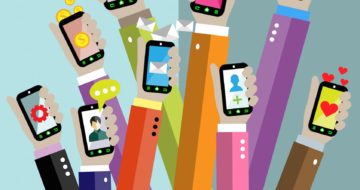Onboarding in mobile apps: why do you need it
While most companies realize the importance of retaining new leads, not all of them understand what mobile app onboarding is and why it is needed. This process is all about adapting new users to the app interface and showing them its key features as quickly as possible. The faster people get to the core value of the product (or WOW moment), the more likely they are to convert into loyal paying users.
When do you need onboarding
The main reason for using onboarding is the high churn rate of new or existing subscribers. If people cannot benefit from the app within 1-2 sessions, they quickly become frustrated and leave looking for alternative ways to solve their problem. To avoid this scenario, you need to develop an effective onboarding in the app, which would help subscribers to quickly master the main features of the product.
- Presentation. The essence of this method is that we guide new users through a series of presentation screens that make it easier for them to understand the core value of the application. As a rule, developers use 3-5 welcome screens and design them in the style of the product interface.
- Personalization. To provide “newbies” with a unique experience of interacting with the app, companies take into account their personal data. Most often, you can ask people to complete a mini-survey, including 2-3 questions, immediately after registration. Thanks to this approach, they get the best first impression of the product and learn its functions with a lot more enthusiasm.
- App tour. Such onboarding in a mobile app comes down to using a series of sequential instructions that explain key functions to users in a specific order. The duration of the tours depends on the complexity of the product, but usually, companies include no more than 5-6 steps in these guides.
- Tooltips. Here, learning relies on pop-up text tooltips that are displayed on the screen when users perform some action, for example, click on a button or open a certain section of the site.
- Update. This method focuses on existing subscribers who need to be informed about new features in the app or features that they have overlooked. People receive notifications with a call to evaluate the innovations right in the product, or they are simply sent emails with descriptions of new features.
Great onboarding technics:
- Don’t make the learning process too long. Nobody wants to spend a lot of time mastering all the functions of the application, so onboarding should be focused only on 4-5 key features of the product.
- Allow users to skip onboarding. Since “beginners” are often turn out to be pretty experienced users, they should always have an option to skip the tutorial. Otherwise, they may uninstall the application without ever seeing the interface.
- Use context. Contextual tooltips can not only help a person understand a new feature, but also increase their loyalty to the creators of the application. By tracking subscriber behavior in a product through heatmaps and other analytics tools, we can make recommendations to them at the most appropriate moments.
- Use start pages and empty states. Welcome pages can explain to people the main value of an app in a few steps, and empty states can effectively encourage people to provide personal information or to do other actions important for their fast adaptation to the app.
- Don’t ask to sign up or buy a subscription right away. If people can grasp the value of an app before they take any responsibilities, they are more likely to become long-term customers.
6 onboarding techniques that increase mobile user engagement:
- Benefit-based onboarding. As part of this approach, you need to highlight several key WOW moments of the app and show them to new users.
- Consumer portrait. This technique is about creating one or more user persona (image of an ideal client) for the target users of the application. After that onboarding has to be adjusted to the needs of each of these “personas”, thereby providing different segments of subscribers with a more personalized experience when they get to know the product.
- User guides, instructions. Provide subscribers with step-by-step guides or instructions for specific features that require more attention. They can be displayed both in the interface and in a separate section of the app.
- Simplify your sign-up process. The fewer steps people need to complete to sign up for the app, the more likely they are to complete the process. This is where registration via social networks or a Google account will come in handy.
- Push notifications. These notifications can effectively nudge people to interact with the app. For example, if you see that after the first session the “newbie” has never logged into the account, you can try to return him with a message about an important function or an upcoming update.
- Series of email messages. You can teach subscribers the basics of the app not only in the product itself but also outside it — using onboarding emails. These messages can help you to explain to users the main functions of the product and get them to learn about these features even a few days after registration.
Conclusion
Considering that the number of mobile users is growing rapidly and apps are gradually becoming more complex, onboarding is an important factor in promoting such digital products. Web giants like Facebook and Google have long relied on this process for better customer retention, and companies that are looking to achieve at least a fraction of their success should follow suit.
By the way with all the mobile apps advantages for business you can read our updated article!




